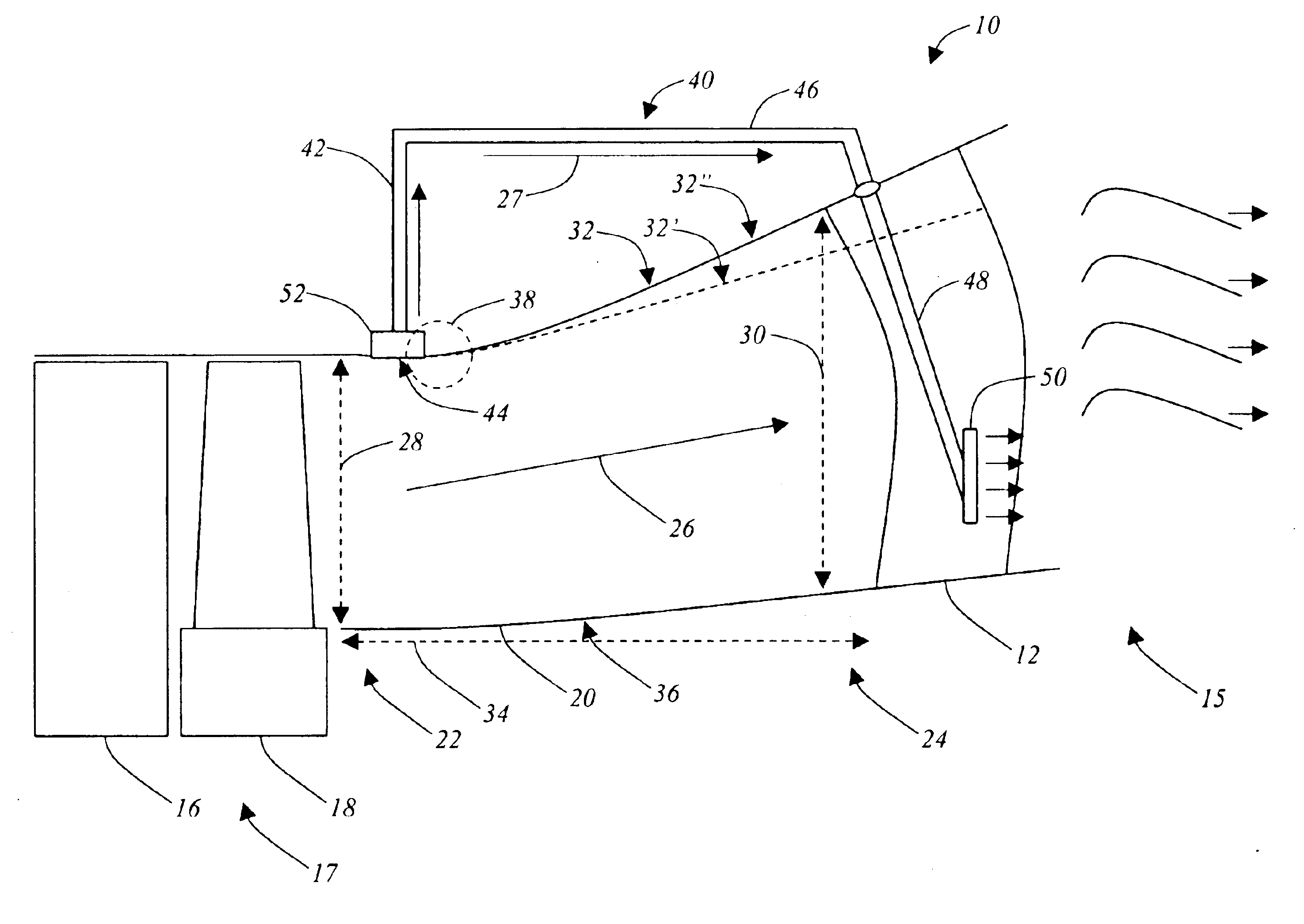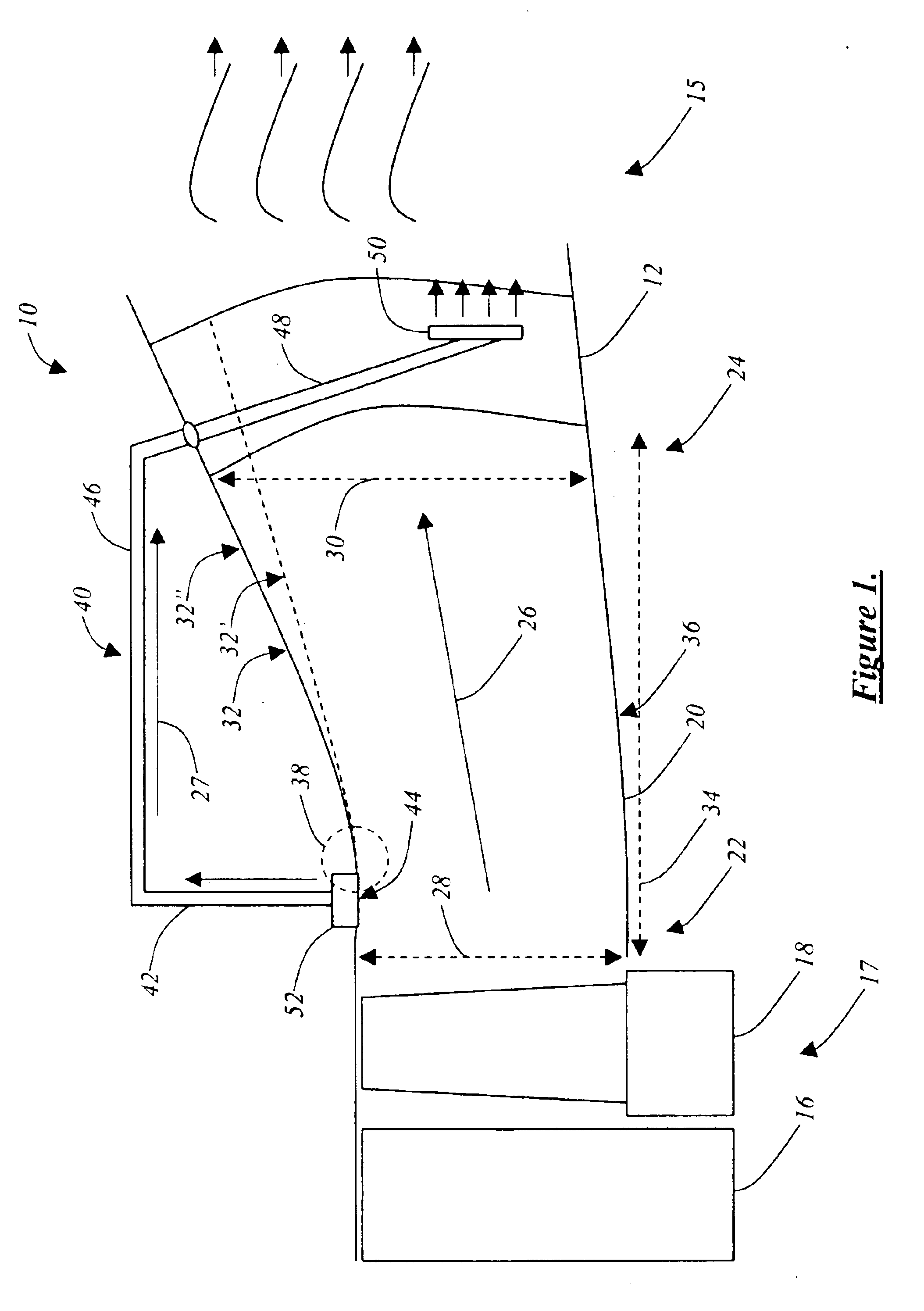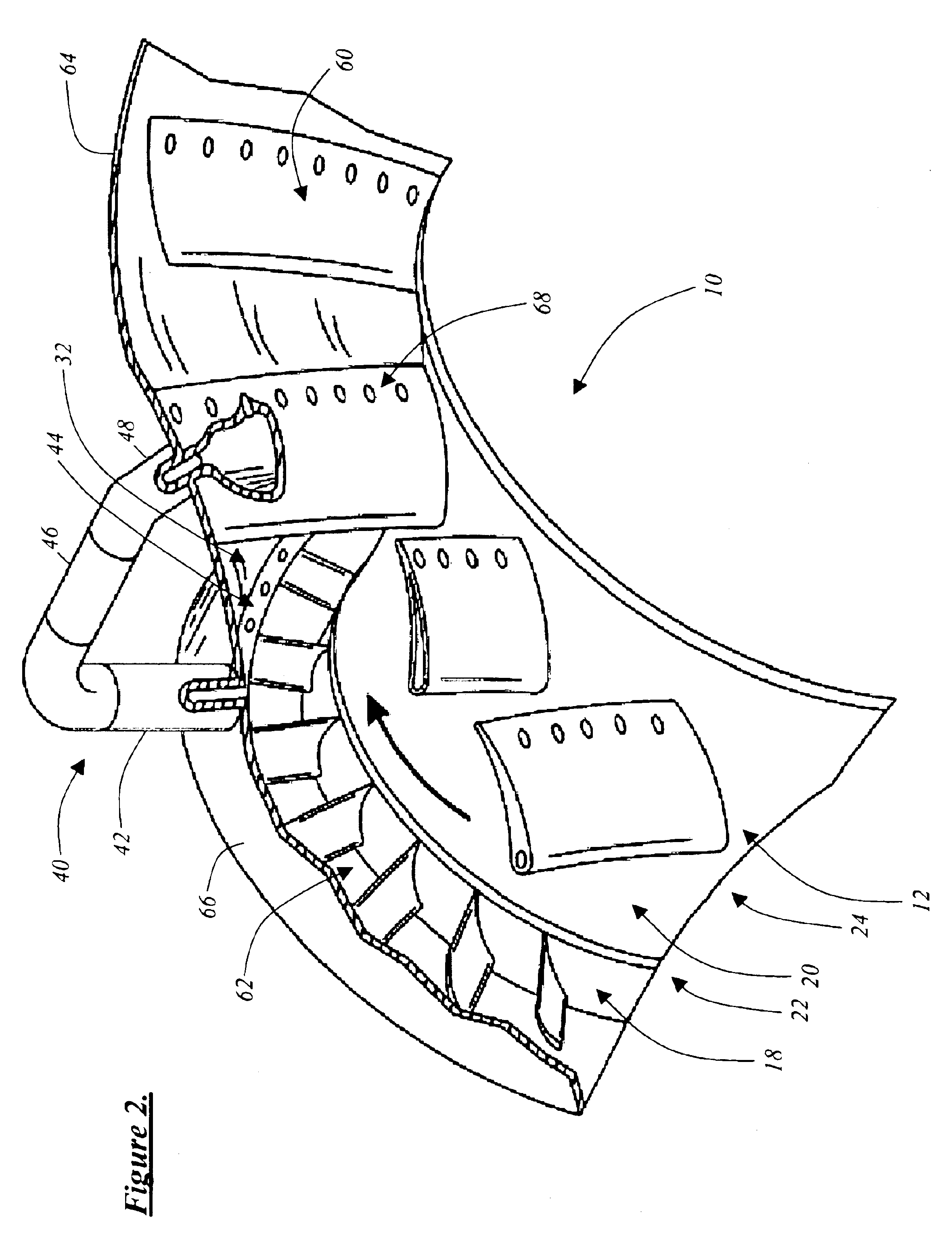Self-aspirating high-area-ratio inter-turbine duct assembly for use in a gas turbine engine
a gas turbine engine and high-area-ratio technology, which is applied in the direction of machines/engines, stators, efficient propulsion technologies, etc., can solve the problems of weak adverse pressure gradients along the configuration, gas turbine engine performance may suffer, and either configuration is problematic, so as to achieve enhanced aerodynamic benefits and optimize the performance of gas turbine engines
- Summary
- Abstract
- Description
- Claims
- Application Information
AI Technical Summary
Benefits of technology
Problems solved by technology
Method used
Image
Examples
Embodiment Construction
The systems, assemblies, and methods of the present invention use boundary layer suction on the outer-body surface of the inter-turbine duct of a gas turbine engine or the like to minimize the creation of adverse pressure gradients and prevent boundary layer separation along the outer-body surface which would otherwise limit the performance of the gas turbine engine. This allows for the use of a relatively large diameter low-pressure turbine spool, including a low-pressure turbine nozzle and an associated low-pressure turbine rotor. The low pressure required to produce the boundary layer suction is obtained from the suction side of the low-pressure turbine nozzle. Establishing a fluid flow path between these points allows for self-aspiration. Advantageously, the fluid flow ejected at the suction side of the low-pressure turbine nozzle may be used to control boundary layer separation on the diffusing side of the low-pressure turbine nozzle. This fluid flow control allows for the use ...
PUM
 Login to View More
Login to View More Abstract
Description
Claims
Application Information
 Login to View More
Login to View More - R&D
- Intellectual Property
- Life Sciences
- Materials
- Tech Scout
- Unparalleled Data Quality
- Higher Quality Content
- 60% Fewer Hallucinations
Browse by: Latest US Patents, China's latest patents, Technical Efficacy Thesaurus, Application Domain, Technology Topic, Popular Technical Reports.
© 2025 PatSnap. All rights reserved.Legal|Privacy policy|Modern Slavery Act Transparency Statement|Sitemap|About US| Contact US: help@patsnap.com



